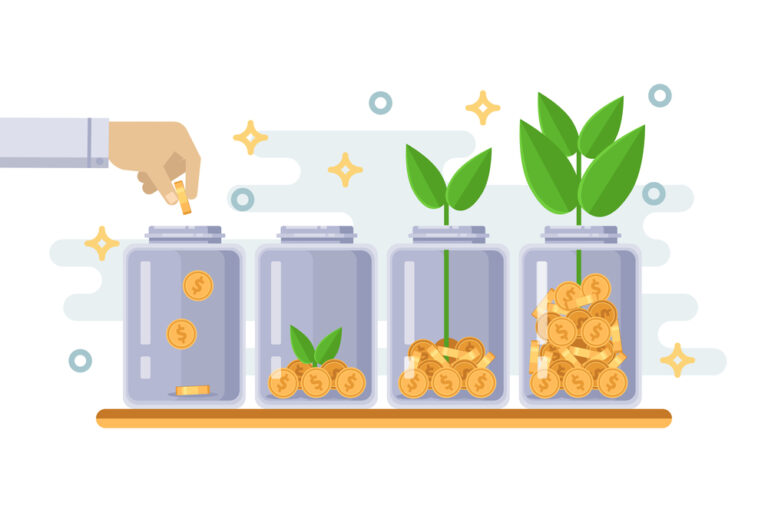
P2P Marketplaces: Promoting Financial Inclusion and Democratizing Investment Access
In recent years, peer-to-peer (P2P) marketplaces have emerged as a disruptive force in the financial sector. These platforms connect individual investors with loan originators, allowing them to lend and borrow money, supporting businesses and individual borrowers, and trade assets without the need for traditional intermediaries. P2P marketplaces are transforming the way people access financial opportunities. Particularly by promoting financial inclusion and democratizing investment access.
For someone living in a place with well-established financial institutions, regulations, and access, it may be a bit difficult to grasp just how important financial inclusion and investment access is in regions that lack a developed financial infrastructure. Let’s take a peek at how P2P marketplaces help solve financial issues in these regions. As well as how beneficial P2P marketplaces are for developed regions.
Financial Inclusion through P2P Marketplaces
Access to credit is a critical aspect of financial inclusion, enabling individuals and businesses to overcome financial barriers and pursue their goals. However, traditional banking systems often exclude individuals with limited credit histories or those residing in underserved areas. A discriminatory attitude is most often enabled by reduced competition over client retainment. These institutions often self-sabotage in a way – by using expensive methods for loan processing, they have to increase the pricing on their services to improve their bottom line.
P2P marketplaces help fix this issue by reducing the need for outdated bureaucracy. And in turn – offering access to flexible and more accessible funds. This is achieved by the use of modern information technology. IT technology helps connect investors and loan originators for a fraction of the price. Which in turn increases the availability of additional funds. There is an argument about how IT benefits the whole financial supply chain, straight down to the borrower. As modern AI enters our day-to-day lives, it becomes much easier to evaluate the creditworthiness of potential borrowers. These systems are becoming advanced to the point that machine discrimination is becoming less and less of an issue. The algorithms and alternative data sources used have a better impact on evaluating applications than the bureaucratic methods of yesteryear.
When P2P marketplaces increase access to funds for loan originators, loan originators are able to serve a larger percentage of their applications. This is a huge part of why P2P marketplaces are the driving force behind financial inclusion. Because of being burdened by limited access to funds, loan originators often have to reduce the amount of the loans they issue. This is often done by having restrictive, or even harsh, loan evaluation methods. Now, with the help of P2P marketplaces, loan originators are able to access the funds and thus grant more loans. By being able to expand their business operations, loan originators can provide loans at more competitive interest rates. This means that more and more people and businesses are now financially included.
Democratizing Investment Access through P2P Marketplaces
In addition to helping facilitate lending and borrowing, P2P marketplaces have played a crucial role in democratizing investment access. Historically, investing in businesses and start-ups was limited to a privileged few. Such as venture capitalists and high-net-worth individuals. P2P marketplaces have disrupted this exclusive landscape by enabling anyone to invest in promising ventures and assets.
Equity crowdfunding platforms, for example, allow individuals to invest in early-stage start-ups and innovative projects. These platforms pool investments from numerous individuals, allowing even small contributions to make a difference. By doing so, P2P marketplaces unlock opportunities for individuals to become stakeholders in businesses they believe in, irrespective of their financial standing.
Real estate crowdfunding is another area where P2P marketplaces have opened up investment avenues. These platforms enable individuals to invest in real estate projects, ranging from residential properties to commercial developments. By fractionalizing property ownership, P2P marketplaces allow investors to diversify their portfolios and participate in the real estate market with lower capital requirements.
Moreover, P2P marketplaces have also facilitated the trading of alternative assets. Such as various goods, services, cryptocurrencies, and even digital collectibles. These platforms provide liquidity and a secondary market for these assets, allowing investors to buy and sell them with ease. This creates opportunities for individuals to invest in alternative assets and diversify their investment portfolios beyond traditional stocks and bonds.
And, last but not least, the P2P marketplace is actually what we’re here for – and it is a major player in the P2P arena. It connects investors and borrowers (loan originators) directly. Thus, removing unnecessary and often expensive intermediaries from the process. This increases the profitability for all ‘peers’ involved and also reduces the price of the final product. Just like previously mentioned variations, a financial P2P marketplace is able to offer a significant upside for a reduced price to all investors.
Bottom line
There is no doubt P2P marketplaces have revolutionized the way business and finance are done around the world. While there are some challenges, like a lack of a regulatory framework in developing markets, most of the developed world can already enjoy the benefits this business model can offer. In fact, it is with great certainty that most of you reading these lines have already benefited from a P2P marketplace of some sort.
P2P marketplaces are certainly here to stay. The benefits they offer have yet to be matched by traditional financial institutions. As financial development continues around the globe, more and more people will enjoy having increased access to all aspects of finance. No longer will investors and borrowers be restricted due to limited access to funds.
